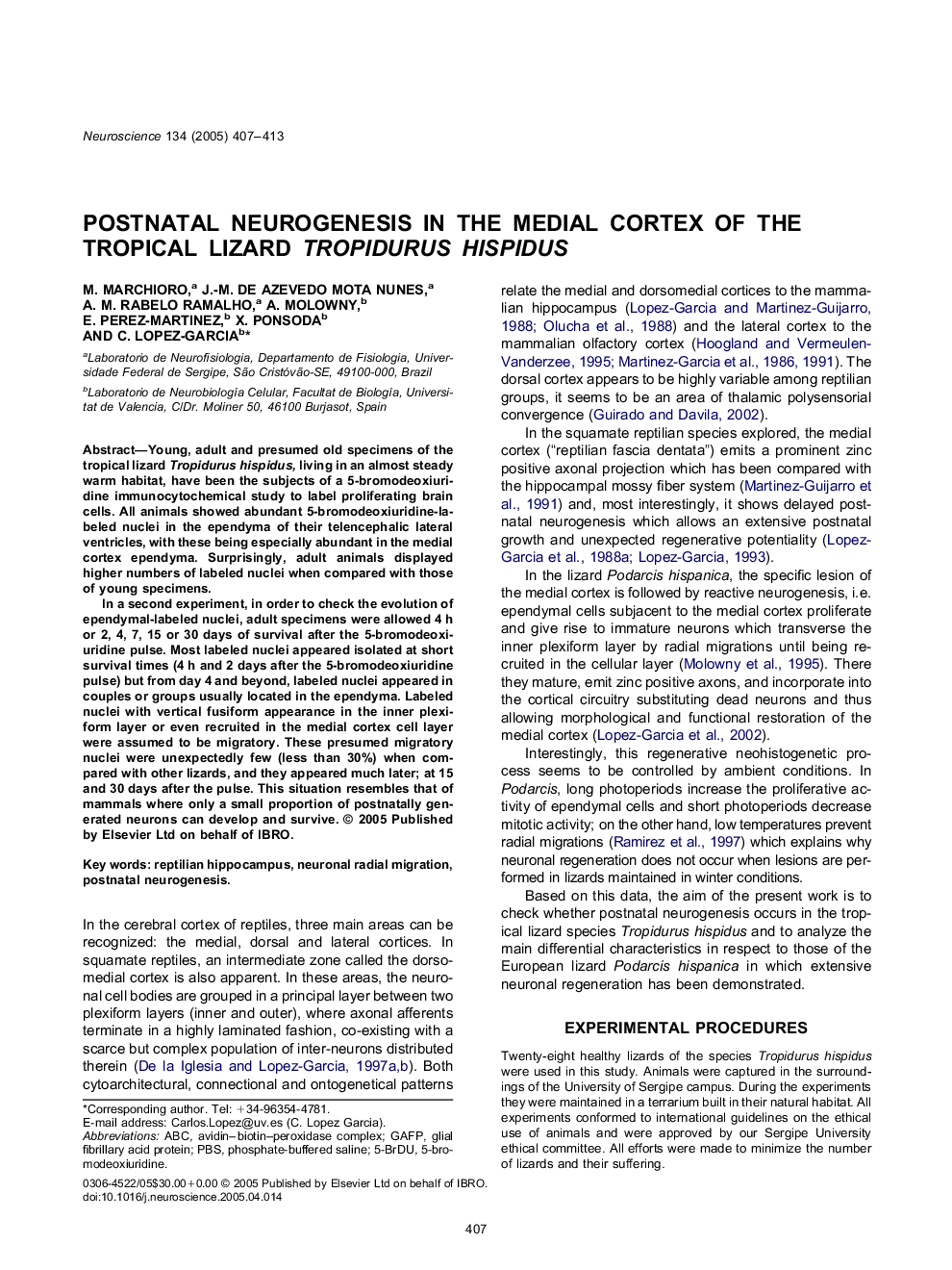| Article ID | Journal | Published Year | Pages | File Type |
|---|---|---|---|---|
| 9425724 | Neuroscience | 2005 | 7 Pages |
Abstract
In a second experiment, in order to check the evolution of ependymal-labeled nuclei, adult specimens were allowed 4 h or 2, 4, 7, 15 or 30 days of survival after the 5-bromodeoxiuridine pulse. Most labeled nuclei appeared isolated at short survival times (4 h and 2 days after the 5-bromodeoxiuridine pulse) but from day 4 and beyond, labeled nuclei appeared in couples or groups usually located in the ependyma. Labeled nuclei with vertical fusiform appearance in the inner plexiform layer or even recruited in the medial cortex cell layer were assumed to be migratory. These presumed migratory nuclei were unexpectedly few (less than 30%) when compared with other lizards, and they appeared much later; at 15 and 30 days after the pulse. This situation resembles that of mammals where only a small proportion of postnatally generated neurons can develop and survive.
Keywords
Related Topics
Life Sciences
Neuroscience
Neuroscience (General)
Authors
M. Marchioro, J.-M. de Azevedo Mota Nunes, A.M. Rabelo Ramalho, A. Molowny, E. Perez-Martinez, X. Ponsoda, C. Lopez-Garcia,
